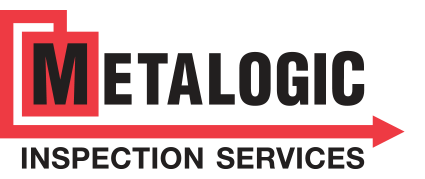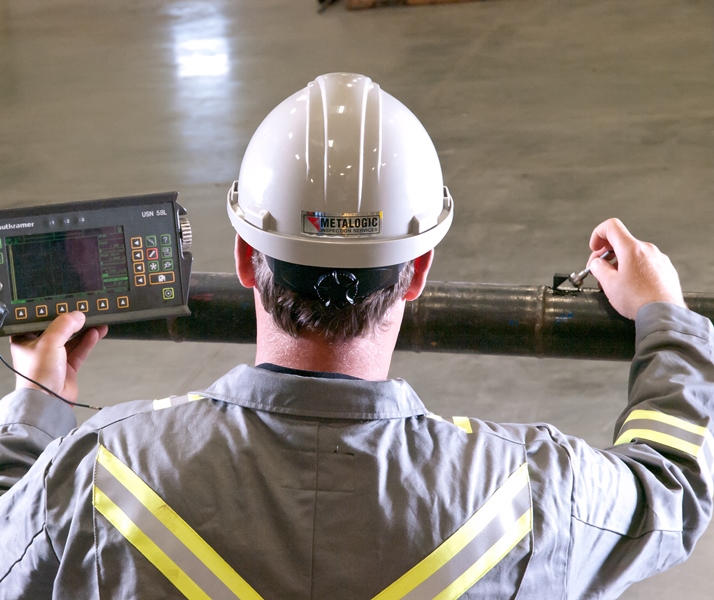Conventional Ultrasonics
With conventional ultrasonic testing, an ultrasonic wave is transmitted at a specific fixed angle into the material being tested.
Frequency is dependent on the material type used so thicker material requires more energy therefore lower frequency probes are used whereas higher frequencies are used in thinner material. The ultrasonic wave is reflected by anomalies or geometry within the material and reflected back to the probe. The A Scan display shows the distance the wave traveled within the material to the indication along the X axis and its size (Based on the strength of the signal returned) is revealed on the Y Axis. Typically 3 angles of probes are used in one inspection to cover all areas of the weld under inspection. Technicians will raster along the weld to ensure total coverage of the weld and HAZ regions. Once a defect is found the technician will determine its size and location and report whether or not is acceptable or rejectable based on the code used for the actual inspection.

